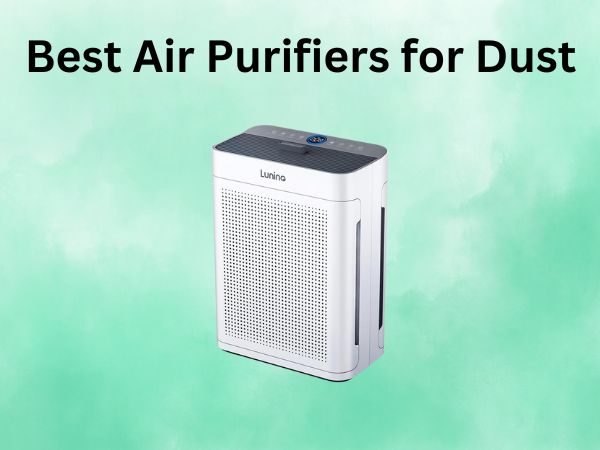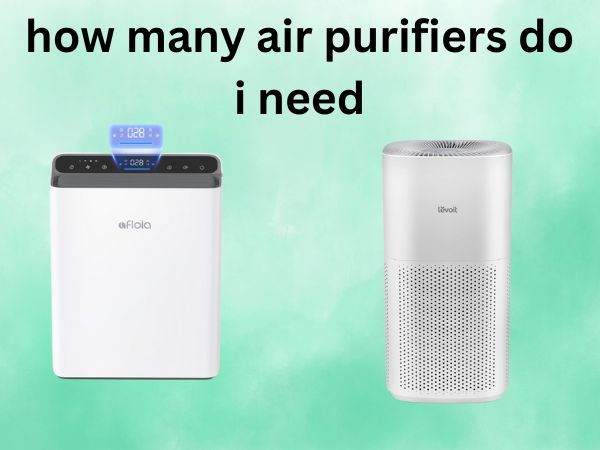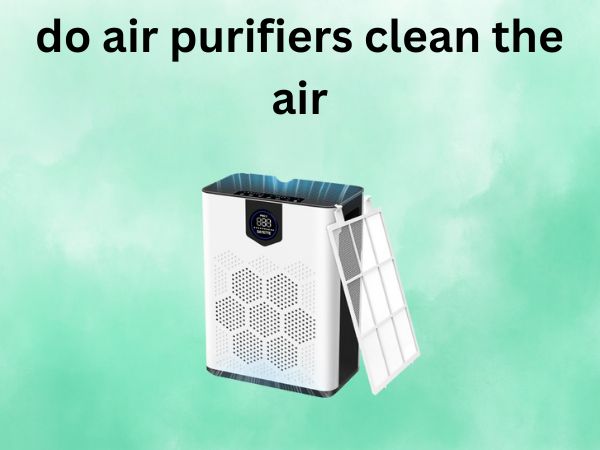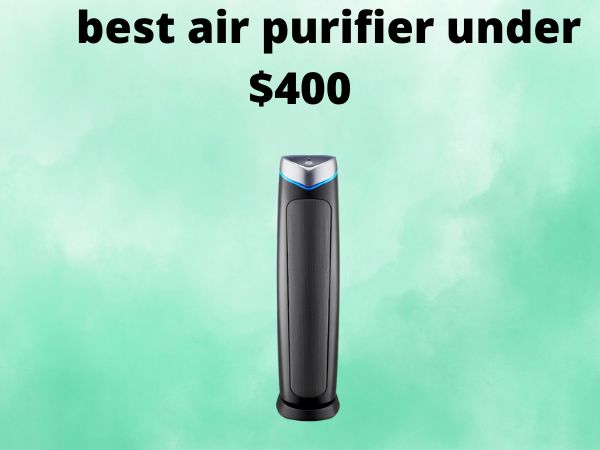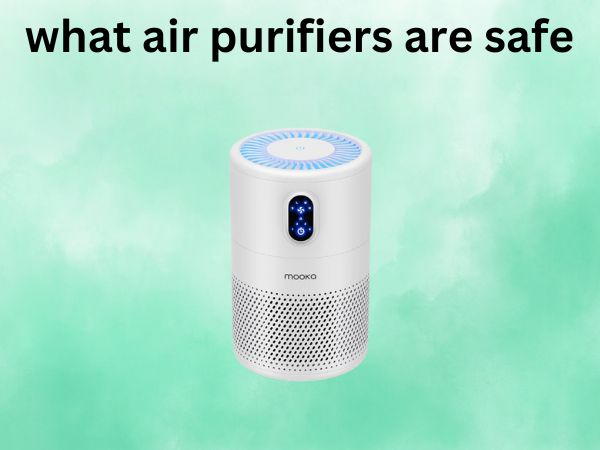5 Best Air Purifiers for Epoxy Resin [In 2025]
Working with epoxy resin opens up a world of creative possibilities, from stunning art pieces to functional home decor. However, the beautiful results come with a concerning downside: potentially harmful fumes that can affect your health. If you’re serious about resin crafting, investing in a quality air purifier isn’t just a luxury—it’s a necessity for your long-term wellbeing.
In this comprehensive guide, I’ll walk you through the five best air purifiers specifically effective for epoxy resin work, helping you make an informed decision to protect your health while pursuing your creative passion.
Table of Contents
Our Top 3 Picks
Top Air Purifiers for Epoxy Resin Artists
After extensive research and consideration of real user experiences, I’ve identified the five best air purifiers specifically beneficial for epoxy resin work. Each has unique strengths and considerations, so let’s explore them in detail.
Resiners Purair Air Purifier: Specially Designed for Resin Work
The Resiners Purair stands out immediately as an air purifier created specifically with resin artists in mind. Unlike general-purpose air purifiers, the Purair was engineered to address the unique challenges of epoxy resin fumes.
This mint green unit offers a compact yet powerful solution, standing at 18.78″ tall with an 8.27″ footprint. What makes it particularly valuable is its SGS certification confirming its ability to remove 83.59% of harmful VOCs from resin fumes—validation that’s rare in the market and provides peace of mind for serious crafters.
The Purair employs a two-stage filtration system that combines a pre-filter for larger particles with an H13 HEPA filter specially formulated for resin VOCs. What I find especially useful is its real-time air quality monitoring system with LED indicators that give you immediate feedback about your workspace air conditions.
For convenience, the one-button auto mode adjusts fan speeds based on detected air quality, though you can manually select from three speed settings if preferred. The 360-degree intake design ensures efficient air circulation for spaces up to approximately 159 square feet—ideal for a dedicated resin crafting area.
Pros and Cons of Resiners Purair
Pros:
- Specifically designed and tested for epoxy resin use
- SGS-certified effectiveness against resin VOCs (83.59% removal)
- Real-time air quality monitoring with clear indicators
- Compact size fits easily in crafting spaces
- Simple one-button operation with auto mode
- Built-in temperature and humidity monitoring
- Filter replacement reminders
Cons:
- Coverage limited to smaller spaces (about 159 sq ft)
- Higher price point than general-purpose purifiers
- Needs filter replacement every 3-6 months
- Some users noted it’s larger than expected from photos
- Currently undergoing CARB certification (expected May 2025)
Real users have praised the Purair for its effectiveness in eliminating resin odors—one mentioned their spouse no longer complains about basement resin smell, while another found it helpful for controlling fumes from both resin work and wax melting. The unit’s size surprised some purchasers, who noted it was larger than anticipated from the product images.
KBOSRZM Air Purifier: Smart Filtration for Resin Studios
The KBOSRZM Air Purifier offers another specialized solution for resin artists with slightly different strengths. This white, modern unit features a more compact design at 6.69″ wide and 8.66″ deep, making it suitable for smaller workspaces.
What distinguishes the KBOSRZM is its three-stage filtration system: a pre-filter for larger particles, an H13 HEPA composite resin purification filter, and an added active carbon filter specifically targeting VOCs through catalytic decomposition. This comprehensive approach helps ensure that resin fumes are not just trapped but broken down to prevent secondary pollution.
Like the Resiners model, this purifier removes approximately 83.69% of harmful VOCs from resin emissions—virtually identical performance to the Purair but with the additional carbon filtration stage. The PM2.5 sensor provides real-time readings of air quality with clear LED indicators.
The touch-control system offers good user experience with autonomous mode for hands-off operation. The unit can handle spaces up to 285 square feet—significantly larger than the Resiners model—making it suitable for more spacious studios or work areas.
Pros and Cons of KBOSRZM Air Purifier
Pros:
- Three-stage filtration including dedicated carbon filter
- Larger coverage area (up to 285 sq ft)
- Patented technology for resin VOC elimination
- PM2.5 sensor with real-time air quality monitoring
- Touch controls with autonomous operation mode
- Compact, modern design
- Environmental monitoring system for thermal conditions and humidity
Cons:
- Replacement filters not yet available (expected May 2025)
- Less user feedback available than other models
- Currently undergoing CARB certification
- Manual reading recommended before operation
- Limited information on noise levels
The KBOSRZM purifier is relatively new to the market, which means fewer long-term user experiences are available. However, its technical specifications and specialized design for resin work make it a strong contender, particularly for those with medium-sized workspaces.
POMORON 4-in-1 Air Purifier: Comprehensive Air Cleaning
While not explicitly marketed for resin work, the POMORON 4-in-1 Air Purifier offers features that make it effectively useful for resin artists. This white cylindrical unit stands 11.81″ tall with a 6.34″ diameter, offering a compact footprint with impressive capabilities.
What makes the POMORON interesting for resin crafters is its multifaceted approach to air purification. Beyond the standard H13 HEPA filtration that captures 99.97% of particles down to 0.3 microns, it incorporates an air ionizer that helps weight down floating particles, UV light for additional purification, and even an essential oil diffuser for pleasant aromas after your resin work.
The activated carbon component of its filtration system specifically targets VOCs and odors—critical for resin work—while the combination of technologies provides comprehensive air cleaning that many users find more effective than single-method purifiers.
With coverage for spaces up to 1,250 square feet, the POMORON offers substantially more range than the specialized resin purifiers, making it suitable for large craft rooms or open-concept spaces where resin work happens alongside other activities.
Pros and Cons of POMORON 4-in-1 Air Purifier
Pros:
- Comprehensive 4-in-1 purification approach
- Extremely large coverage area (up to 1,250 sq ft)
- Multiple certifications (UL, FCC)
- Ultra-quiet sleep mode (25dB)
- Flexible timer options (8/12/24 hours)
- Essential oil diffuser function
- Easily available replacement filters
Cons:
- Not specifically designed for resin VOCs
- No real-time air quality monitoring
- No auto-adjustment based on air quality
- UV light effectiveness debated among air quality experts
- Ionizer technology controversial in some air quality circles
User reviews of the POMORON have been enthusiastic, with many reporting improved air quality, elimination of odors, and even better sleep and mood. One long-term user of a year noted its effectiveness with pets and sports equipment, appreciating its quiet operation and unexpected benefits of the essential oil diffuser feature.
BlissAer Kery Plus: Smart and Powerful for Large Studios
The BlissAer Kery Plus brings smart technology to air purification, making it an excellent option for tech-savvy resin artists with larger workspaces. This sleek white unit measures 16.99″ tall with an 8″ square base, offering powerful performance in a reasonable footprint.
What distinguishes the Kery Plus is its smart connectivity—compatible with Google Home and Alexa, allowing voice control and app-based management of your air purification. This means you can adjust settings, check air quality, or turn the unit on/off remotely when preparing to work with resin.
The H13 True HEPA filtration captures 99.97% of particles including smoke, dust, and allergens—important for the complete range of particulates in resin work. With impressive coverage for spaces up to 1,500 square feet, this purifier can handle large studios or open floor plans where resin work takes place.
For overnight operation, the 25dB whisper-quiet mode ensures peaceful sleep, while the integrated child lock adds safety for studios in family homes. The air quality indicator light provides real-time feedback about your space’s air conditions.
Pros and Cons of BlissAer Kery Plus
Pros:
- Smart connectivity with app control and voice commands
- Extensive coverage area (up to 1,500 sq ft)
- Multiple certifications (FCC, ETL, RoHS, EPA, CARB)
- Quiet operation (25dB in sleep mode)
- 360° air circulation for efficient purification
- Air quality indicator light
- Child lock for safety
- Easy filter replacement process
Cons:
- Not specifically designed for resin VOCs
- Higher price point than non-smart options
- Replacement filters relatively expensive
- Less emphasis on chemical filtration specifically
- Some smart features may be unnecessary for basic needs
Limited user feedback is available for this model, though one user reported satisfaction with its performance in a basement setting, particularly appreciating the air quality indicator light. Another user in a commercial setting with extremely poor air quality noted visible reduction in dust after implementing this purifier.
ToLife Air Purifier: High Coverage with Real-Time Monitoring
Rounding out our top five is the ToLife Air Purifier, which offers an impressive combination of large coverage area and intelligent monitoring features. This grey unit measures 16.34″ tall with a 12.99″ width, offering substantial air processing power for larger spaces.
The standout feature of the ToLife purifier is its PM 2.5 display with real-time air quality sensing. The color-coded indicator shifts between green, yellow, and red based on detected air quality, automatically adjusting fan speed in response—a hands-free benefit when you’re focused on your resin work.
With H13 HEPA filtration capturing particles down to 0.3 microns and coverage for spaces up to 2,000 square feet, this unit offers the largest range in our review. This makes it particularly suitable for large, open studios or multi-purpose spaces where resin work is one of several activities.
The timer function offers standard 2, 4, 6, and 8-hour settings, but the unique cycle timer function allows you to program the purifier to run at the same time daily—convenient for scheduled resin sessions or overnight air cleaning after a day of crafting.
Pros and Cons of ToLife Air Purifier
Pros:
- Extensive coverage (up to 2,000 sq ft)
- Real-time PM 2.5 display with color indicators
- Automatic fan speed adjustment based on air quality
- Multiple certifications (UL, Energy Star, FCC, ETL, CARB)
- Option to turn off display lights for sleep
- Unique cycle timer function
- Affordable replacement filters
Cons:
- Louder than advertised at lowest speed (closer to 50dB than 23dB)
- No specific sleep/whisper mode
- No remote control or smart connectivity
- Default “off” state prevents use with smart plugs
- Not specifically designed for resin VOCs
User reviews note quick delivery and easy setup, with appreciation for the automatic detection and adjustment of fan speed based on air quality. Several users mentioned that while it’s effective at dust reduction, it may not be as effective for odors and smoke as higher-priced specialized units. The lack of a true whisper-quiet mode was noted by users comparing it to other models.
Understanding the Need for Air Purifiers in Resin Work
Before diving into product recommendations, let’s address why air purification matters so much when working with epoxy resin. If you’ve ever noticed that distinct chemical smell while mixing or pouring resin, you’re detecting volatile organic compounds (VOCs) being released into your workspace.
Health Risks of Epoxy Resin Fumes
Epoxy resin emits VOCs during curing, which can cause both short and long-term health issues. In the short term, you might experience:
- Headaches and dizziness
- Eye, nose, and throat irritation
- Nausea or lightheadedness
- Skin irritation upon contact
- Respiratory discomfort
Long-term exposure without proper ventilation or air filtration increases risks of:
- Respiratory sensitization
- Chronic breathing problems
- Potential chemical sensitivities
- Exacerbation of existing conditions like asthma
This is precisely why so many resin artists find themselves seeking air purification solutions—not just for comfort, but for their health and safety.
What Makes an Air Purifier Effective for Resin Work
Not all air purifiers are created equal when it comes to handling resin fumes. Standard air purifiers that focus on allergens and dust might not adequately address the chemical compounds in resin. For effective resin workspace purification, look for:
- VOC filtration capabilities (often via activated carbon)
- True HEPA filtration (to capture microscopic particles)
- Real-time air quality monitoring
- Sufficient coverage for your workspace
- Low maintenance requirements
The products we’re reviewing today excel in these critical areas, making them particularly suited for epoxy resin crafters.
Comparison of the Top 5 Air Purifiers for Epoxy Resin
To help you make the best choice for your specific needs, let’s compare these five air purifiers across key factors most relevant to resin artists:
| Feature | Resiners Purair | KBOSRZM | POMORON 4-in-1 | BlissAer Kery Plus | ToLife |
| Specific for Resin | Yes | Yes | No | No | No |
| VOC Removal Rate | 83.59% | 83.69% | Not specified | Not specified | Not specified |
| Filtration Stages | 2-stage | 3-stage | 4-in-1 system | H13 HEPA | H13 HEPA |
| Coverage Area | 159 sq ft | 285 sq ft | 1,250 sq ft | 1,500 sq ft | 2,000 sq ft |
| Air Quality Monitor | Yes | Yes | No | Yes | Yes |
| Auto Mode | Yes | Yes | No | Yes | Yes |
| Smart Features | No | No | No | WiFi, app, voice | No |
| Noise Level | Not specified | Not specified | 25dB (sleep) | 25dB (sleep) | 50dB (lowest) |
| Price Range | $$$ | $$$ | $$ | $$$ | $$ |
| Best For | Dedicated resin workspaces | Medium studios | Multi-purpose spaces | Tech-savvy artists | Large studios |
This comparison reveals that your choice ultimately depends on your specific priorities. If resin-specific filtration is paramount, the Resiners or KBOSRZM models offer specialized technology. For larger spaces, the POMORON, BlissAer, or ToLife units provide greater coverage. Those wanting smart features might prefer the BlissAer, while budget-conscious artists might favor the POMORON or ToLife options.
Key Features to Look for in a Resin Air Purifier
When evaluating air purifiers for your resin workspace, understanding the technical aspects that impact performance can help you make a more informed decision.
Filtration Systems Explained
The filtration system is the heart of any air purifier, and different technologies target different types of contaminants:
- Pre-filters: Capture larger particles like dust and hair, protecting the more sophisticated filters from clogging quickly. All five of our reviewed models include this basic but important first line of defense.
- HEPA Filters: High-Efficiency Particulate Air filters trap microscopic particles as small as 0.3 microns with 99.97% efficiency. H13 is a medical-grade HEPA classification, offering superior filtration compared to standard HEPA filters. This is crucial for capturing the fine particles associated with resin work.
- Activated Carbon Filters: These specifically target VOCs, gases, and odors through adsorption—the chemical process where gas molecules adhere to the carbon’s surface. For resin work, this component is essential, as it’s the primary defense against the chemical compounds released during curing.
- Specialized Resin Filters: The Resiners and KBOSRZM models feature filters specifically designed to target resin VOCs, which may offer better performance for these specific compounds compared to general activated carbon filters.
- Additional Technologies: Some units incorporate supplementary methods like UV light (POMORON) or ionization, which may provide additional benefits but aren’t essential for resin work.
When choosing a purifier, prioritize strong HEPA filtration combined with substantial activated carbon or specialized resin VOC filtration for best results.
Coverage Area and Placement Tips
The effectiveness of your air purifier depends significantly on proper sizing and placement:
- Sizing: Always choose a purifier rated for at least the square footage of your workspace. For resin work, erring on the side of slightly oversized is beneficial since you’re dealing with chemical compounds, not just dust or allergens.
- Placement: Position your purifier within 6-10 feet of your resin working area, ideally between you and the resin to catch fumes before they reach your breathing zone. Avoid corners or places where airflow is restricted.
- Room Characteristics: Consider ceiling height, obstacles, and airflow patterns. Higher ceilings effectively increase the volume of air to be filtered, potentially requiring larger units than square footage alone would suggest.
- Multiple Units: For very large spaces or particularly sensitive individuals, using two smaller units strategically placed may provide better coverage than one large unit.
Remember that manufacturer coverage claims often assume ideal conditions. For resin work specifically, consider choosing a purifier rated for 20-30% more square footage than your actual space for optimal performance.
Monitoring and Smart Features
Modern air purifiers offer varying levels of intelligence and user feedback:
- Air Quality Indicators: Real-time feedback about your air conditions is particularly valuable for resin work, as it helps you gauge when ventilation might need to be supplemented or when it’s safe to continue working. Color-coded systems (green/yellow/red) provide at-a-glance understanding.
- Auto-Adjustment: Purifiers that automatically increase fan speed when detecting pollutants ensure you’re always getting appropriate filtration without manual intervention—especially helpful when you’re focused on detailed resin work.
- Smart Connectivity: App control and voice commands add convenience, allowing adjustments without interrupting your work or remote operation to pre-clean your space before starting a project.
- Additional Sensors: Some units monitor temperature and humidity alongside air quality—useful data points for resin artists, as these factors can affect curing times and results.
While not essential, these smart features can enhance your crafting experience and potentially improve your health protection by ensuring optimal air purification precisely when needed.
How to Maximize Your Air Purifier’s Effectiveness in Resin Work
Even the best air purifier works better with proper integration into your overall safety strategy. Here are practical tips to enhance your air quality while working with resin:
- Pre-clean the air: Run your purifier for 30-60 minutes before beginning your resin work to start with the cleanest possible air.
- Layer your protection: Combine your air purifier with additional ventilation when possible—open windows (weather permitting) or use extraction fans to create air movement.
- Create an air curtain: Position your purifier to draw air away from your breathing zone, essentially creating a barrier between you and potential fumes.
- Maintain consistent operation: Keep your purifier running throughout your entire resin session and for at least 2-3 hours afterward to continue processing lingering VOCs released during curing.
- Regular maintenance: Follow the manufacturer’s recommendations for filter replacement—typically every 3-6 months for heavy resin use. A clogged or saturated filter loses effectiveness dramatically.
- Complement with PPE: Your air purifier works best as part of a complete safety approach that includes proper gloves, adequate workspace ventilation, and potentially a respirator for sensitive individuals or large projects.
- Monitor filter condition: Some VOCs can saturate carbon filters faster than normal household use would. If you notice returning odors before the recommended replacement time, your filter may need earlier replacement.
By integrating these practices, you’ll maximize both the effectiveness of your purifier and your overall safety when working with epoxy resin.
FAQs About Air Purifiers for Epoxy Resin
How long should I run my air purifier when working with epoxy resin?
For optimal protection, run your air purifier for at least 30 minutes before starting your resin work, throughout your entire working session, and for 2-3 hours afterward. Resin continues releasing VOCs during the curing process, so continued filtration after you finish working is important.
Can an air purifier completely eliminate all risks from resin fumes?
While high-quality air purifiers significantly reduce exposure to harmful VOCs, they should be considered one part of a comprehensive safety approach. For complete protection, combine air purification with good ventilation, appropriate workspace design, and personal protective equipment when necessary.
How often should I replace the filters in my air purifier when using it for resin work?
Resin work typically requires more frequent filter replacement than general household use. Most manufacturers recommend replacement every 3-6 months, but heavy resin users might need more frequent changes. If you notice returning odors or decreased effectiveness, it’s time to replace your filters regardless of the timeline.
Are specialized resin air purifiers worth the higher cost compared to general-purpose purifiers?
For dedicated resin artists working regularly with epoxy, specialized purifiers like the Resiners Purair or KBOSRZM offer targeted filtration that may provide better protection against specific resin VOCs. However, high-quality general purifiers with robust activated carbon filtration can also be effective, especially in larger spaces or multi-purpose rooms.
Can I use a portable air purifier in conjunction with a workshop ventilation system?
Absolutely! In fact, layering your protection with both systems provides optimal air quality. Position your portable purifier near your working area to create localized clean air, while your ventilation system handles broader air exchange. This combination approach often provides the best protection, especially for regular or large-scale resin work.
Conclusion: Investing in Clean Air for Your Resin Hobby
After reviewing these five excellent air purifiers for epoxy resin work, it’s clear that each offers distinct advantages depending on your specific needs and workspace. Your ideal choice depends on your priorities:
- For dedicated resin artists seeking specialized filtration, the Resiners Purair and KBOSRZM offer technology specifically developed for resin VOCs.
- For those with larger spaces, the ToLife and BlissAer Kery Plus provide extensive coverage with intelligent monitoring.
- For multi-functional purification, the POMORON 4-in-1 offers a comprehensive approach that addresses multiple air quality concerns.
What’s most important is recognizing that air purification isn’t an optional luxury when working with epoxy resin—it’s an essential investment in your health and comfort. The immediate benefits of odor reduction and decreased irritation combine with the long-term value of protecting your respiratory system from cumulative exposure.
Remember that your air purifier works best as part of a comprehensive approach to resin safety that includes good ventilation practices, appropriate workspace design, and proper handling techniques. By creating a cleaner, safer creative environment, you’ll not only protect your health but likely enjoy your resin crafting more, with fewer discomforts or concerns about fumes.
Whichever model you choose, consistent use and proper maintenance will ensure you receive the full benefit of your investment. Clean air supports not just your health, but the sustainability of your resin hobby for years to come.

